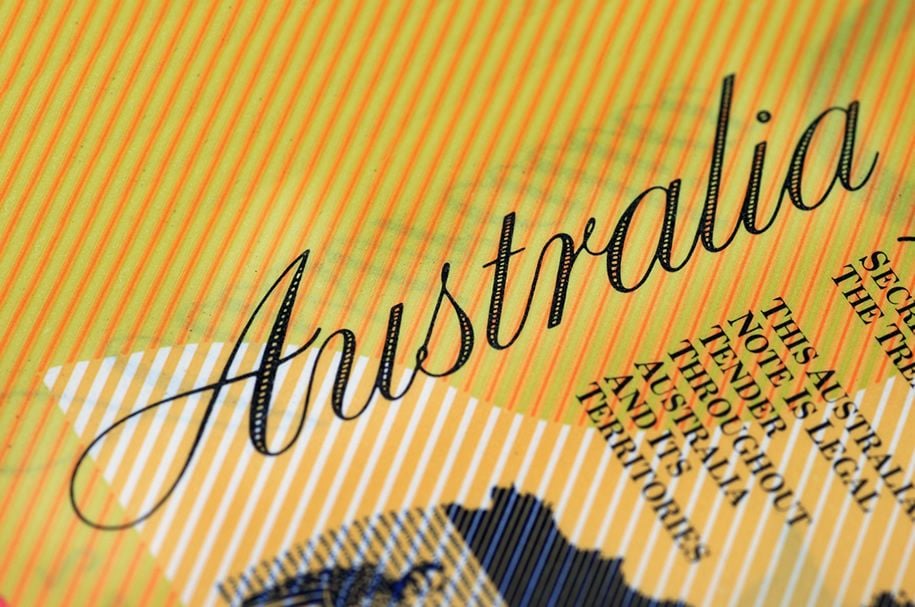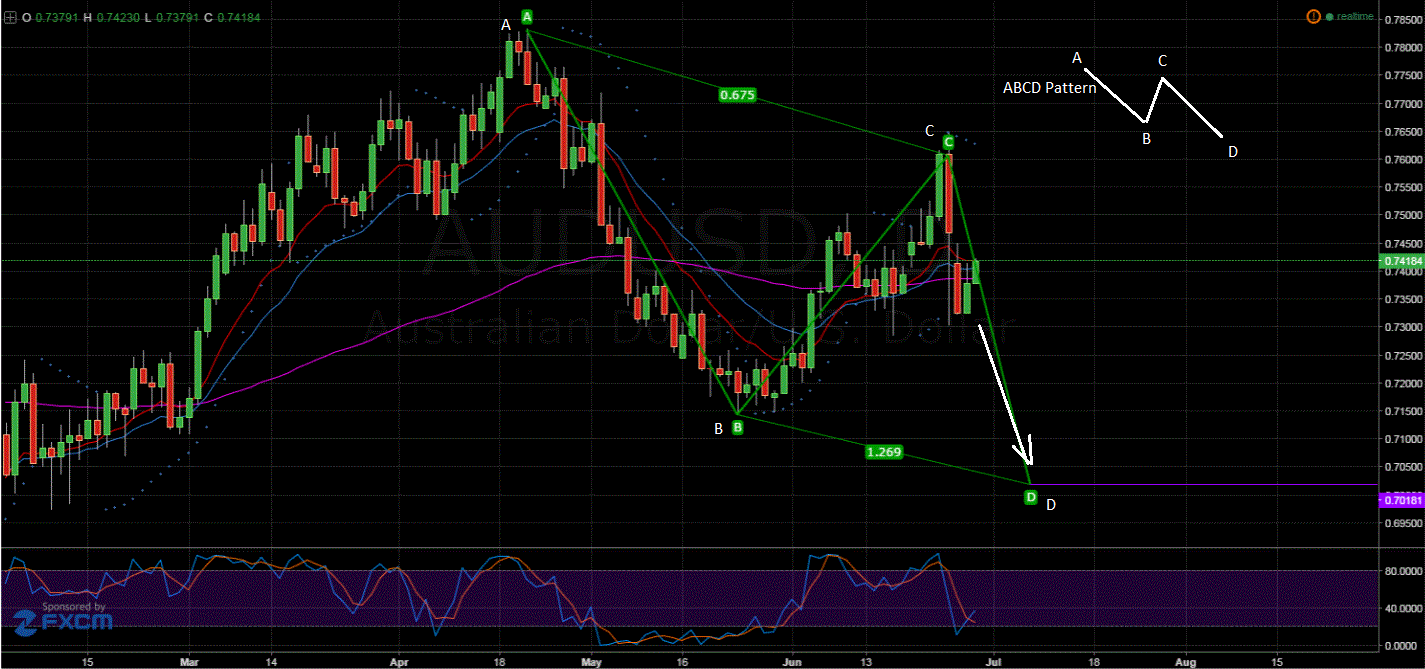Analysts Seen Turning Bearish on Australian Dollar Outlook

The Australian dollar is expected to weaken against the US dollar in months to come say an increasing number of both chart technicians and fundamental analysts
The tense market atmosphere which has surrounded Brexit has put pressure on riskier currency’s such as the Australian dollar, whilst safe-havens like the US dollar have benefited.
This has resulted in a steep fall in AUD/USD to lows of 0.7302 last Friday after the Brexit referendum result, however, since then it has recovered and is currently trading at 0.7429.
Nevertheless, analysts like Blackwell Global’s Mathew Ashley see this as the beginning of a more precipitous decline:
“The Aussie Dollar could be poised to extend recent bearishness. Specifically, the combination of a host of bearish technical could exacerbate any losses resulting from weakening fundamental results.”
Ashley sees a bearish ABCD pattern forming, and the negative Brexit news starting the C-D leg lower.
ABCD patterns are broadly like zig-zags or measured moves, in that they are formed of three waves A-B, B-C and C-D (see chart below).
Blackwell’s Ashley further adds:
“This final leg will complete once the AUDUSD has retraced to around the November low at the 0.7018 price level. In addition to the ABCD pattern, Parabolic SAR readings on the daily chart remain bearish despite the pair’s recent recovery.”
The Parabolic Sar is an indicator which helps traders to determine the current direction of the trend.
ANZ Bank’s Head of FX Strategy, Daniel Been, sets out the fundamental case for why AUD/USD might fall in a recent note, saying of AUD first that:
“Uncertainty around Brexit will keep the AUD under pressure. Medium-term, if the trend towards less global integration were to continue, this wouldm justify a bigger premium on AUD assets and weigh on the AUD.”
The dollar, however, will be the “main beneficiary” of the risk-off climate, he says, “but it may not be the only one.”
ANZ see AUD/USD falling to 0.67 by the end of the year, and to 0.72 in September, from its current 0.74 level.
Westpac’s Head of FX, Robert Rennie, is more bearish on AUD/USD after Brexit, changing his previous forecast that gains would be capped at 0.76 with gains now being capped at 0.75.
His chief reason is increased uncertainty due to Australian Federal Elections and an increased likelihood that the Reserve Bank of Australia will cut interest rates, due to “global developments.”
“Weaker UK growth, a summer of European discontent and lots more political risk to come all suggest the A$ should now be capped closer to 0.7500.”





